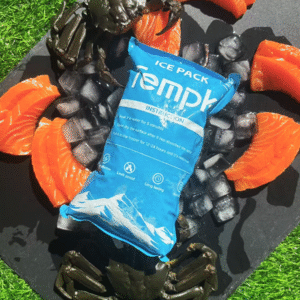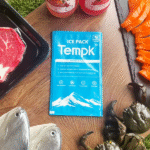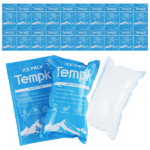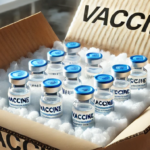Requisitos de envasado de hielo seco para 2025: Una guía completa
En 2025, La logística del envío de productos sensibles a la temperatura, como los productos farmacéuticos., biológicos, y los alimentos exigen un cumplimiento preciso del envasado con hielo seco. hielo seco, que se sublima a -78,5°C, Desempeña un papel fundamental en la logística de la cadena de frío al mantener las bajas temperaturas requeridas sin riesgo de derretirse.. Sin embargo, su manejo está estrictamente regulado. This guide provides a detailed breakdown of the updated dry ice packaging requirements para 2025, garantizar que sus envíos permanezcan seguros, obediente, y eficiente.
-
¿Cuáles son los requisitos clave para el envasado de hielo seco? 2025?
-
Cómo garantizar el cumplimiento de UN1845 y PI 954?
-
¿Qué impacto tiene 2025 normativa sobre embalajes de hielo seco?
-
Cómo prevenir errores comunes en el envasado de hielo seco?
-
¿Cuáles son las mejores prácticas para empacar hielo seco de manera segura y eficiente??
¿Cuáles son los requisitos clave para el envasado de hielo seco? 2025?
En 2025, dry ice packaging regulations are guided primarily by the Instrucción de embalaje de IATA 954 (PI 954) y UN1845, ensuring safety and proper labeling. Los requisitos clave incluyen:
-
Desfogue: Packages must allow the escape of CO₂ gas to prevent pressure buildup.
-
Etiquetado adecuado: Every shipment needs to be clearly labeled with the UN1845 number, el peso del hielo seco, y una clase 9 símbolo de peligro.
-
Materiales de embalaje: Usa fuerte, insulated materials that permit safe sublimation of CO₂ gas. Suitable options include Styrofoam coolers and plastic-lined boxes.
-
Límite de peso: Air shipments are restricted to 200 kg de hielo seco por paquete.
Ejemplo del mundo real:
A global pharmaceutical company enhanced its dry ice packaging compliance by rigorously following PI 954 and UN1845 guidelines, ensuring flawless audits and timely delivery of temperature-sensitive products.
How Do I Pack Dry Ice for 2025 Cumplimiento?
Packing dry ice correctly in 2025 requires adherence to multiple safety and regulatory standards:
Proceso de embalaje paso a paso
-
Elija contenedores aislados: Use materials like Styrofoam or plastic coolers. These must be capable of withstanding the extreme cold of dry ice without compromising safety.
-
Desfogue: Ensure containers are vented to allow CO₂ gas to escape, prevenir la acumulación de presión.
-
Colocación de hielo seco: Position the dry ice on top of the shipment. As dry ice is heavier than air, placing it on top helps maintain the correct temperature for sensitive products.
-
Sealing and Labeling: Ensure the container is sealed but vented, and label it with UN1845, Clase 9 symbols, y el peso neto del hielo seco.
Mejores prácticas
-
Weight Verification: Double-check that the total dry ice weight does not exceed the 200 kg limit for air shipments.
-
Use IATA’s Checklist: Regularly follow the IATA checklist to ensure compliance with all safety standards and documentation requirements.
| Requisito | Detalles | Implications for You |
|---|---|---|
| Etiqueta UN1845 | “Dióxido de carbono, sólido (hielo seco)” | Ensures shipment identification and regulatory compliance |
| Envasado ventilado | Proper venting for CO₂ gas release | Prevents rupture and ensures safety |
| Límite de peso | 200 kg per package for air transport | Avoids non-compliance and shipment delays |
| Documentación | Accurate net weight and shipper details | Essential for audits and customs clearance |
How Do New 2025 Regulations Impact Dry Ice Packaging?
El 2025 regulations introduce stricter safety and compliance protocols, including updates to Aquí está Pi 954 y the DGR (Regulaciones sobre mercancías peligrosas). The most significant changes include:
-
Enhanced Venting Regulations: More stringent requirements for CO₂ gas escape to prevent dangerous pressure buildup inside the containers.
-
Digital Air Waybills (VEJEZ): Increasingly adopted worldwide, eAWBs will require more precise tracking and documentation of shipments.
-
Monitoreo de temperatura: Certain shipments, especially pharmaceuticals and biologics, now require real-time temperature monitoring to ensure product integrity during transit.
Key Changes to Note:
-
eAWB Adoption: Mandatory in more regions by 2025, improving efficiency and compliance.
-
Pressure Testing: Stricter packaging pressure testing guidelines to withstand the release of CO₂ gas.
-
Regulatory Updates: Some regions have introduced tighter restrictions on CO₂ venting to prevent unsafe buildup.
Common Mistakes in Dry Ice Packaging and How to Avoid Them
Dry ice packaging errors can lead to shipment delays, problemas de cumplimiento, or even damage to sensitive products. Here are the most common mistakes and how to avoid them:
-
Improper Ventilation: Failing to vent packages allows CO₂ gas to accumulate, which can cause the package to rupture. Always ensure packaging allows gas to escape.
-
Etiquetado incorrecto: Missing or incorrect UN1845 labels can delay shipments or lead to fines. Verify that all labels are applied correctly.
-
Overloading the Package: Superando el 200 kg weight limit can lead to non-compliance. Stick to the specified weight limits.
-
Inadequate Packaging Material: Using unapproved or damaged packaging can cause temperature fluctuations. Only use materials that meet the required standards.
Key Trends in Dry Ice Packaging for 2025 y más allá
As we look towards the future of dry ice packaging, key trends indicate a shift toward sostenibilidad, automatización, y integración tecnológica.
-
Iniciativas de sostenibilidad: Companies are moving towards envases biodegradables y cargadores reutilizables to reduce environmental impact.
-
Automatización en la logística de la cadena de frío: Sensores inteligentes are becoming a standard feature in dry ice packaging, enabling automated temperature and gas monitoring.
-
Innovative Packaging Solutions: New materials that extend the cooling duration of dry ice shipments are being introduced, optimizing product safety.
2025 Trends and Future Developments in Dry Ice Packaging
With the global demand for temperature-sensitive products growing, especialmente en productos farmaceuticos y biotecnología, the dry ice packaging industry is seeing significant developments. Las innovaciones incluyen Monitoreo de IoT systems for real-time temperature data and the rise of portable dry ice generators to minimize transportation costs.
-
Crecimiento del mercado: The dry ice packaging market is expected to grow significantly as the demand for biologics, vacunas, and frozen food rises. Los analistas predicen un 7.6% tasa de crecimiento anual de 2025 a 2032.
-
Soluciones de embalaje sostenibles: The trend toward using recyclable and biodegradable materials is accelerating, driven by both demanda del consumidor y presiones regulatorias.
Preguntas frecuentes: Dry Ice Packaging Requirements
Q1: What is the maximum weight of dry ice allowed per package for air shipments?
A: Arriba a 200 kilos of dry ice per package is allowed for air shipments under IATA regulations.
Q2: Can I reuse my dry ice packaging materials?
A: Sí, reusable packaging materials are permitted, but they must be inspected for structural integrity and cleanliness before reuse.
Q3: How can I prevent pressure buildup in my dry ice shipment?
A: Use vented packaging that allows Gas co₂ to escape and avoid sealing seams completely to prevent pressure buildup.
Conclusión y recomendaciones
To ensure compliance with dry ice packaging requirements en 2025, it is crucial to follow the latest regulations and best practices. Focus on proper ventilación, preciso etiquetado, and using the right materiales de embalaje. Regularly train your team on updated SOPs and stay informed about regulatory changes.
Siguientes pasos:
-
Review and update your dry ice packaging SOPs to meet 2025 estándares.
-
Invest in sustainable packaging solutions to minimize environmental impact.
-
Implement real-time monitoreo de temperatura for sensitive shipments.
Acerca de Tempk
En Templ, Nos especializamos en proporcionar compliant dry ice packaging solutions that ensure the safe transport of your temperature-sensitive goods. Our materials meet all IATA y UN1845 requisitos, ensuring that your shipments are seguro, obediente, y eficiente.
Ready to ensure your shipments are compliant? Contact us today for personalized guidance.
























